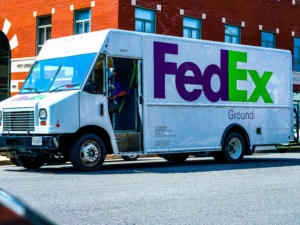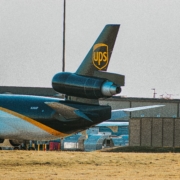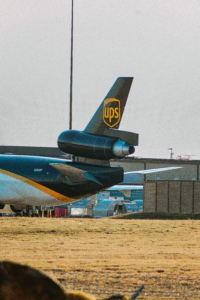UPS Announces (and Surprises) with GRI Announcement
Following FedEx’s 2024 General Rate Increase Announcement on August 30th, we published an article that provided some details and insight to help shippers begin planning for the increased costs that this will drive. We had also expressed surprise that FedEx had announced an average GRI that was lower than last year. At the time that this article was released, UPS had not yet publicized their plans for their 2024 rate change.
So, a lot of us were on the edge of our seats, wondering how UPS would react. They were put in a bit of a sticky situation given the fact that they needed to figure out a way to fund the expensive new Teamster agreement that just went in place. At the same time, they need to be sure to protect their crumbling market share. UPS has faced competitive pressure from FedEx, Amazon, LaserShip/ Ontrac and the slew of other delivery options that have popped up within the last few years.
Many experts including ICC Logistics, were predicting record level increases for the Parcel shipping community. Some even predicted double digit increases! Well, it looks like we all received another major surprise. It looks like UPS has decided that they are not in a position to announce a higher GRI than FedEx. On Friday September 8th, UPS posted the following on their website.
The following changes will be effective December 26, 2023. Previews will be available later.
The rates for UPS® Ground, UPS Air and International services will increase an average net 5.9%.
The list of ZIP Codes to which Area Surcharges apply will change.
The list of ZIP Codes aligned to certain zones will change
Once again we need to emphasize that the announced GRI is just an average, and that the actual impact will vary greatly depending on a shipper’s volume characteristics.
Also, we are certain that both carriers will find other creative ways to help ensure they protect and grow their profit margins. Our last article detailed how Parcel Carrier accessorial charges have been a sneaky way for them to drive rate increases that are higher than the GRI that they announce. We provided some important details and insight related to how Delivery Area Surcharges have been added and changed over time.
It looks like we hit the nail on the head in relation to Delivery Area Surcharges, as the UPS announcement spells out that the list of Zip Codes that DAS applies to will change! We are willing to bet the farm that the change will not result in less zip codes receiving DAS charges!
It’s also interesting that UPS announced that there will be a change in the alignment of zip codes and zones. We had seen this announced in the past. However, we were not able to identify any major changes in the zone charts that we studied. We will definitely be taking a closer look at this area for the 2024 rate increase impact, as this could have a major impact on shippers.
For example, currently 5 Lbs. UPS Ground Commercial package going to Zone 4 carries a published rate of $14.60. If UPS adjusted their zone chart, and caused this same package to be classified as a Zone 5 package, the cost would jump to $15.85, an 8.6% increase! This is obviously far above the announced 5.9% GRI. We are not saying that UPS or FedEx will make these kind of changes. However, the fact that UPS has announced that there will be changes to zones has one wondering.
In addition to the GRI announcement, UPS also provided details related to their Peak Demand, and Holiday Peak surcharges for the remainder of 2023 and into 2024. Besides big increases in Additional Handling and Large Package Surcharges (which will increase 6-7% compared to Peak Demand surcharges from 2022), they also provided specifics of rates for high volume Holiday Peak shippers (A Demand Surcharge will apply to certain UPS Air Residential, UPS Ground Residential and UPS SurePost packages, for customers who are billed for more than 20,000 packages during any week following October 2022).
Below is the chart that high volume shippers will use to determine their peak demand surcharges.
| October 29, 2023 until January 13, 2024 | ||||||
| Service Level | >105% to 125% of Baseline Volume | >125% to 150% of Baseline Volume | >150% to 200% of Baseline Volume | >200% to 300% of Baseline Volume | >300% to 400% of Baseline Volume | >400% of Baseline Volume |
| UPS SurePost | $1.35 Per Package | $1.85 Per Package | $2.15 Per Package | $2.60 Per Package | $4.45 Per Package | $6.40 Per Package |
| UPS Ground Residential | $1.35 Per Package | $1.85 Per Package | $2.15 Per Package | $2.60 Per Package | $4.45 Per Package | $6.40 Per Package |
| UPS Next Day Air Residential | $2.40 Per Package | $2.90 Per Package | $3.20 Per Package | $3.65 Per Package | $5.50 Per Package | $7.50 Per Package |
| All Other UPS Air Residential | $2.40 Per Package | $2.90 Per Package | $3.20 Per Package | $3.65 Per Package | $5.50 Per Package | $7.50 Per Package |
We compared this chart to the one that UPS provided for the 2022 Holiday Peak Season. The increase in rates for these volume demand surcharges increased as much as 8% for some tiers!
So what does this all mean? First of all, we are sticking to our guns, and reiterating that the impact of the 2024 Parcel Carrier rate increase will be higher than 5.9% for many. We are already seeing this in many areas as described above, and expect to continue to see this as the specifics of 2024 rates trickle in from both UPS and FedEx.
The bottom line is that if you are using the announced 5.9% GRI’s as a basis to budget for 2024, you are probably making a big mistake. The impact of the increases could be record level for some, depending on which levers the carriers decide to pull! Also, don’t think that you are protected from major increases if you have a Rate Cap in place in your agreements. Rate Caps typically only apply to base rates, so accessorial increases can have a major impact on your actual costs.
Finally, we cannot stress enough the importance of partnering with companies like ICC Logistics, that can help you determine the exact impact of these rate changes. It is crucial to fully analyze your current agreements, pricing structures, and actual data to determine true impact. Without this approach, you are leaving yourself open to surprises that can have a major negative impact on you and your companies’ profits.








 The bottom line is this-
The bottom line is this- 





